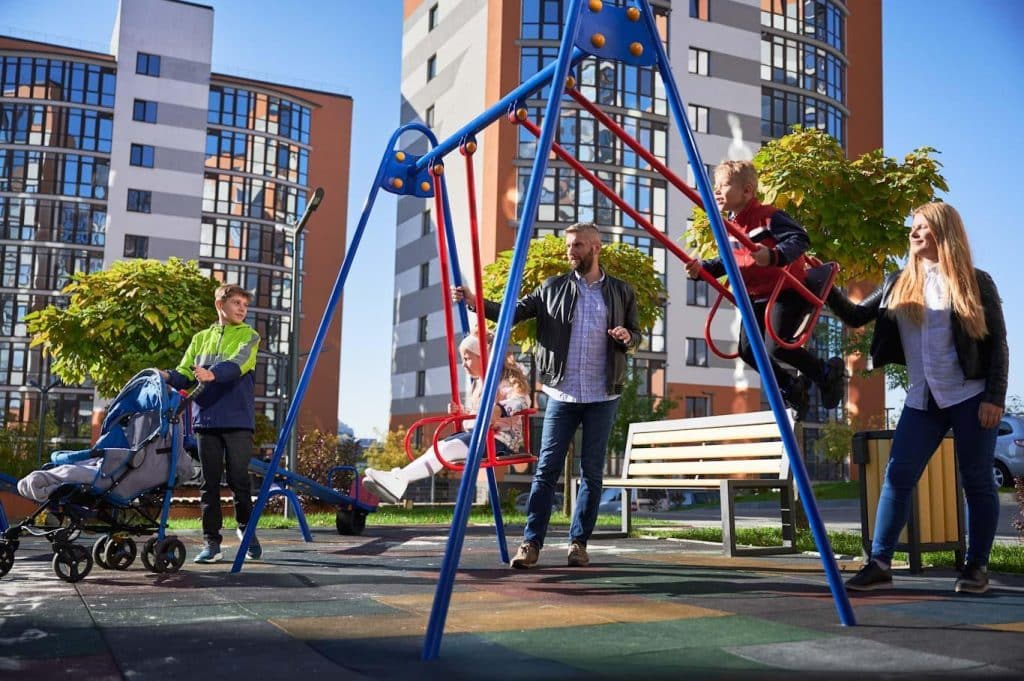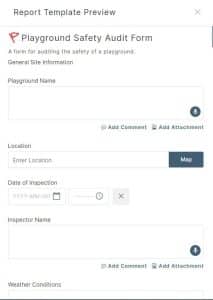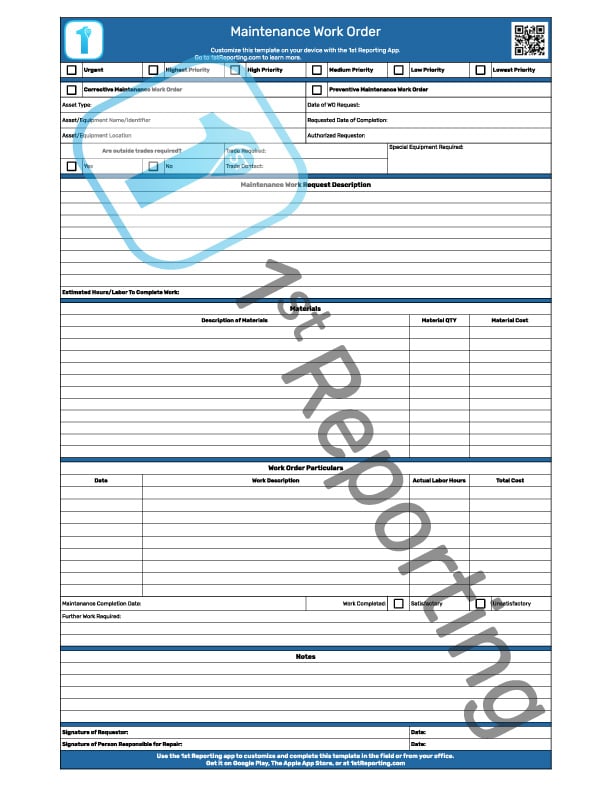A playground safety audit form is a document used to keep track of playground and equipment safety to ensure kids have fun safely. Playgrounds can host a number of different structures, some that move and some that inspire kids to move. However, regardless of the equipment, it’s going to need an inspection from time to time to ensure that it stays safe. After all, kids are hard on this sort of equipment, so proper maintenance and care is essential.
Let’s explore how you can improve playground and park safety while simultaneously making your job easier. How, you ask? With a digital playground safety audit form that your field personnel can use today from anywhere and with any smartphone, tablet, or computer.
Critical Components of a Playground Safety Audit Form
There are about a dozen critical components required in a robust playground safety audit form. To make things easier, I’ve created the following table to define those elements of the playground safety audit that are critical to a safe playground.
| Playground Safety Audit Form Component | Component Description |
|---|---|
| General Site Information | This section contains general information like park name, location, and date of inspection. |
| Surfacing | Points pertaining to the surface material and depth to protect from falling injuries and conforming to ASTM F1292 standards for impact attenuation. (1) |
| Equipment Condition | Current general equipment conditions. |
| Playground Equipment Safety | Safety-specific points pertaining to playground equipment use. |
| Swing Safety | Swing-specific safety components. |
| Slide Safety | Slide-specific safety components. |
| Climbing Equipment Safety | Climbing equipment-specific safety components. |
| Seesaw Safety | Seesaw-specific safety components. |
| Accessibility for ADA Compliance (2) | Elements to ensure that all children can access equipment regardless of wheelchair, crutches, or other mobility concerns. (3) |
| Signage and Labels | Playground-appropriate warnings and labels. |
| Maintenance and Documentation | Review of maintenance and repair logs and policies. |
| Environmental Conditions | Points dealing with shade and sun protection, visibility, and fencing. |
| Emergency Preparedness | Emergency procedure and supplies documentation and availability. |
In a nutshell, it would be best if the form covered, at a minimum:
- Inspection of equipment (condition, age-appropriateness, maintenance).
- Evaluation of surfacing material (shock absorption, condition, coverage).
- Assessment of environmental factors (location, visibility, accessibility).
- Checklist for safety signage and supervision protocols.
Of course, the digital template in the 1st Reporting app contains all of the points noted in greater detail. Furthermore, the app’s customization features can tailor these forms to specific requirements. So, no matter what sort of playground setup you have, 1st Reporting is capable of handling the inspection with full-form customizability.
Conducting a Comprehensive Playground Safety Audit

If you want a comprehensive playground audit, you need to draft a comprehensive SOP (standard operating procedure) that aligns with the audit form. If you want to read up on best practices when writing SOPs, check out my SOP resources:
SOP Resources:
- How To Write A Standard Operating Procedure
- Downloadable Standard Operating Procedure Template For Business
If your team is using paper-based audit forms and reports, you may want to reconsider. Paper-based audit reports are slow, can get lost or damaged, and increase your ability to respond quickly. Let’s talk about how to fix the communication bottleneck, which is the paper report.
Leveraging Technology for Playground Safety
The 1st Reporting application is a mobile application that runs on every device and enables teams to record and document audits in the field in real-time. Furthermore, the app has multiple useful features like custom form building, custom notifications, standard KPI reporting, a team handbook, and GPS-enabled documents and forms.
What’s so great about the 1st Reporting app, and how does it help playground safety? Well, there are two features that I want to point out: 1) mobile reporting from any device for park staff, maintenance teams, security, or anyone on your team, no matter where they are, and 2) Public reporting feature so you can engage the public to report playground safety or maintenance concerns to your team (or appointed responsible party) directly.
Comparing a solution like the 1st Reporting app with a paper-based system instantly reveals how far behind a clipboard and printed audit form really are – they are lightyears behind technologies like the 1st Reporting application software. Consider other features in the app, like form linking, to create entire workflows, and you’ll have a highly advanced and adaptive playground reporting solution. Here’s an example of how you might link forms dynamically to create a workflow:
Playground Equipment Damage Report ↝ Equipment Repair Work Order ↝ Equipment Commissioning Checklist
Recent Statistics and Facts on Playground Safety

- According to Nationwide Children’s Hospitals in the US, more than 213,000 children are treated annually for injuries sustained at playgrounds. (4)
- The National Safety Council website states that falls cause almost 80% of playground injuries. (5)
- There is a disproportionate amount of upper extremity injuries requiring outside medical treatment than there are head or neck trauma injuries. (6)
This disproportional injury-to-treatment ratio shows that further documentation and understanding of how playground risks occur is a necessity not just in the playground and park management practices but also in the scientific (and namely healthcare) fields.
Taking Action to Improve Playground Safety Today
Ensuring the safety of children in playgrounds is more than checking off boxes on an audit form; it’s about committing to proactive measures that genuinely protect and enhance the well-being of our communities. By leveraging a digital playground safety audit form, like the one offered through the 1st Reporting app, you can streamline your safety protocols, improve response times, and empower your field teams with the tools they need to keep playgrounds safe and fun.
Take action today. Jump into 1st Reporting’s customizable playground safety audit form and start making a tangible impact on child safety in public parks. After all, when it comes to our children’s safety, there’s no such thing as being too prepared. Let’s work together to create playgrounds where every child can play with peace of mind.
Article Sources
- “Standard Specification for Impact Attenuation of Surfacing Materials within the Use Zone of Playground Equipment.” 2022. Astm.org. 2022. https://www.astm.org/f1292-22.html.
- “Americans with Disabilities Act.” 2024. DOL. 2024. https://www.dol.gov/general/topic/disability/ada#:~:text=The%20Americans%20with%20Disabilities%20Act,local%20government’%20programs%20and%20services..
- “2010 ADA Standards for Accessible Design.” 2010. ADA.gov. September 15, 2010. https://www.ada.gov/law-and-regs/design-standards/2010-stds/.
- “Playground Safety Children Younger than 6 Years.” 2024. Nationwidechildrens.org. 2024. https://www.nationwidechildrens.org/research/areas-of-research/center-for-injury-research-and-policy/injury-topics/sports-recreation/playground-safety-children-younger-than-6-years.
- “Playground Safety – National Safety Council.” 2024. Nsc.org. 2024. https://www.nsc.org/community-safety/safety-topics/child-safety/playground-safety?srsltid=AfmBOorH4P_Sbsq2qwoSbX3gOCaG94D3ly4vA72NZZXzPE6LM6S0B050.
- Kennedy, Eric A, Drew A Filchner, Zane D Patterson, and Heather M Olsen. 2023. “Epidemiological Characteristics of School Playground Injuries.” Clinical Pediatrics 63 (1): 135–45. https://doi.org/10.1177/00099228231172482.




